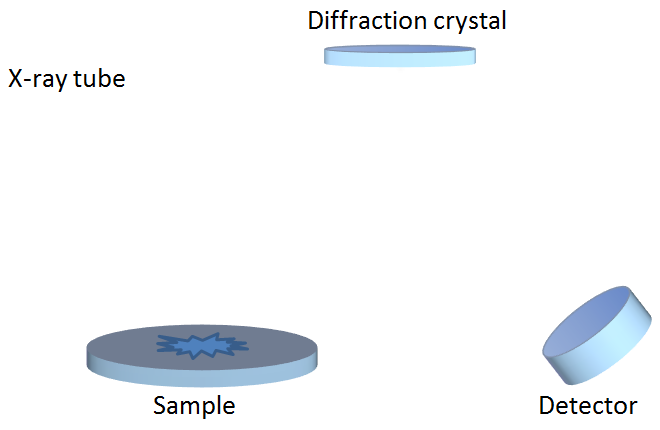5.1.1.1 WDXRF spectrometry
The main advantageous feature of WDXRF spectrometers is the high wavelength / energy resolution obtained, which is typically of 5 – 20 eV.
The characteristic radiation originating from the excited sample is collimated using a set of parallel reflecting planes (Soller collimators) as to restrict the detected x-rays to a given angle of emergence from the sample. Further, the x-rays imping on a crystalline structure (often called analyzing crystal) that is positioned under an angle θ regarding the direction of the collimated beam. Only the x-rays having a wavelength λ fulfilling the Bragg law (nλ=2dsinθ) are diffracted from the analyzing crystal with a lattice space d and reach a detector, which is positioned under an angle of 2θ respectively to the original direction of the beam. Most of the spectrometers feature the possibility of selecting different analyzing crystals for the improved measurement of several groups of elements (intervals of energies / wavelengths).

Diffraction allows selecting a given energy with high energy resolution, and allows eliminating spectral interferences that might arise from the closeness of some characteristic emission energies (e.g. 7.057 keV Fe-Kβ and 6.932 Co-Kα). Due to the need for collimation WDXRF spectrometers typically have a lower efficiency (counts per unit of concentration) than EDXRF spectrometers and hence, require the use of higher power x-ray tubes.
The measurement of characteristic lines for different elements can be conducted either in a sequential way by translating the collimators, the analyzing crystal and the detector as to change the angles θ and 2θ simultaneously, or by removing the second collimator and positioning a number of detectors under the angles required for the different wavelengths. The first option increases the measurement time, whereas the second the cost of the instrument.